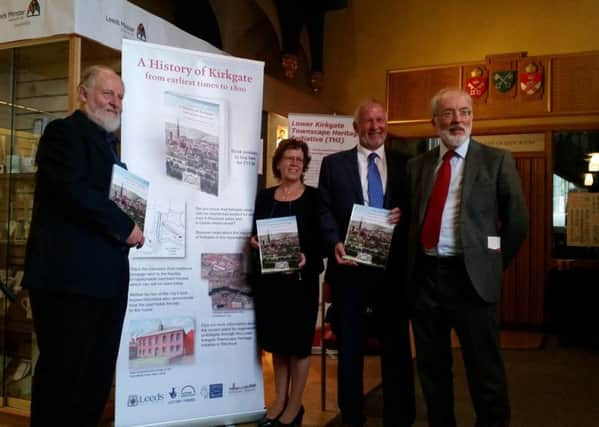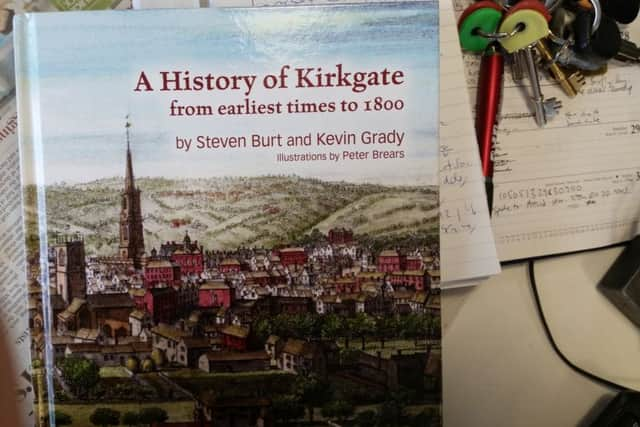Leeds nostalgia: A History of Kirkgate book launch


That was according to Fiona Spiers, from the Heritage Lottery Fund, who attended the official launch of the book, along with its authors Dr Kevin Grady and Steven Burt, MP Hilary Benn and council leader Coun Judith Blake.
The book chronicles the history of Kirkgate from its inception, which goes back to the Norman Invasion, up to the 1800s, the authors having uncovered interesting new information in the form of land deeds, together with information on people’s job titles, lists of their belongings, deeds of properties and more besides.
Advertisement
Hide AdAdvertisement
Hide AdThe Heritage Lottery Fund, together with Leeds City Council and the Leeds Civic Trust, have invested money to restore the oldest building in Leeds - the First White Cloth Hall - which dates back to the 1700s and was the building which made Leeds a signficant trading outlet. It has laid in ruin for decades but could now been renovated and turned into a modern shopping arcade, celebrating its architecture and place in the city.


Some £1.5m has been invested by the Lottery fund, which in turn could attract a further £4.8m from other sources.
Speaking at the launch, Ms Spiers said: “It’s very encouraging for us to se progress on this scale. There is some 2,000sq ft of retail space which will be brought back into use, up to 28 jobs created. We are not just about heritage, we are about people and communities. This is a bit of a first for us but we think it’s lottery money well spent.”
The book itself gives a detailed historical account of the creation of Kirkgate and its impact upon the city and its people. It also includes new full colour illustrations by Peter Brears, depicting for the first time the way people lived in the past.
Advertisement
Hide AdAdvertisement
Hide AdDr Grady said: “The motivation for writing this book was to provide justification for why money should be spent on buildings in Kirkgate. When people ask whether the First White Cloth Hall shouldn’t just be flattened, this book is the answer to that question.


“We have pieced together a great number of details about the street in an attempt to answer questions which have been going round in our heads for a long time.”
Co-author Mr Burt said the book was accessible to both old and young, containing as it does wonderful new illustrations.
There are new maps showing how Leeds would have looked hundreds of years ago, with narrow country lanes wending their way through a patchwork of fields and fords, with neat little cottages backing onto managed orchards and beyond that woodland.
Advertisement
Hide AdAdvertisement
Hide AdThere are also cross sections of houses on Kirkgate, which by the 1700s was a diverse street, with rich merchants living alongside bakers and other commoners. Leeds became famous across the world for its cloth markets.
While the book covers the period up to 1800 and contains a section on the modern day street, Dr Grady hinted at the press conference, which was held at Leeds Minster, that there could be room for a sequel, as neither his or Mr Burt’s enthusiasm seems to be lacking.
A Hisory of Kirkgate (£11.99) is available to buy from Leeds Civic Trust